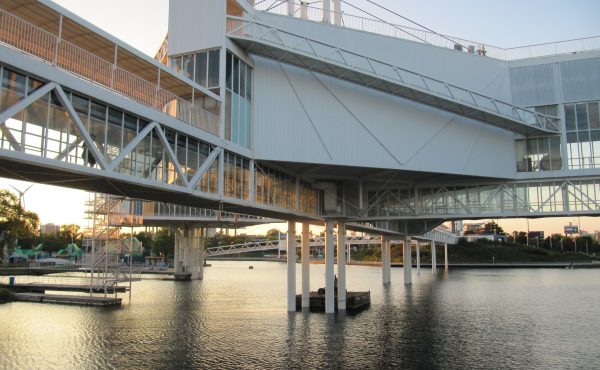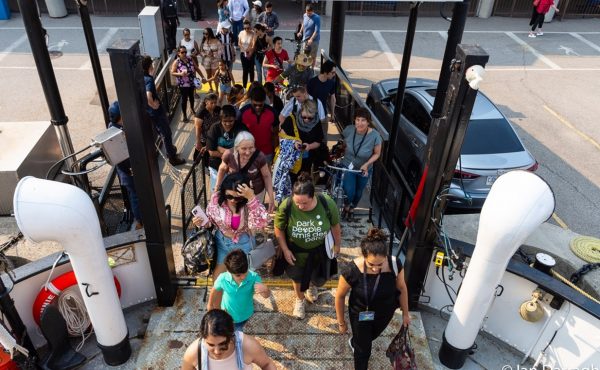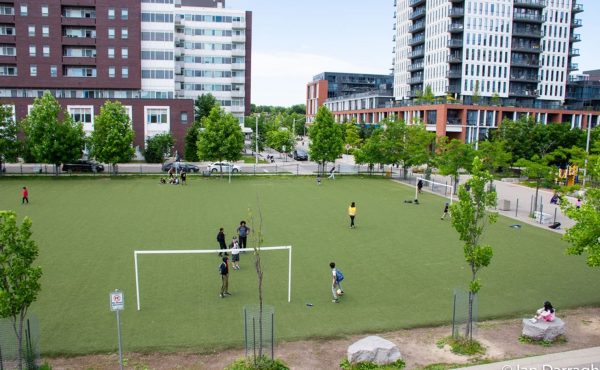

The girls hockey imbroglio, which could turn into a bench-clearing brawl at council this week, is one of those curious political sideshows — the product of The Toronto Star’s breathless advocacy journalism, some well-executed string pulling on the part of savvy Leaside parents, and a stagey response from David Miller that smells more like issues management than serious policy.
At council this week, Janet Davis, chair of the community development and recreation committee, will put forward a hastily conceived plan [PDF] ostensibly intended to right wrongs, but also designed to get an embarrassing mess out of the media.
Several thoughts about this issue occur:
1. Yes, girls’ leagues do have trouble getting ice time, but it must be acknowledged that the shortages are most felt in affluent neighbourhoods, such as North Toronto, Leaside and The Beaches. Elsewhere — Scarborough, for example — minor league hockey has been in decline for years, largely because of shifting demographics and immigration. Hockey, after all, is an expensive pastime.
2. The Davis plan hints at the lingering post-amalgamation turf wars between Parks and Rec, which operates 48 indoor rinks, and the eight arena boards of management, all located in the old City of Toronto. The department views the boards like fractious republics on the fringes of a tottering empire. Davis and the mayor want to give Brenda Patterson, head of the Parks, Forestry and Recreation department, a veto over the arena boards’ programming as a means of ensuring equity. But the move begs a question: If the city truly doesn’t approve of the arena boards, why not scrap them and bring all the rinks under one administrative roof? Answer: because not all the arena boards are the villains they’ve been made out to be in the course of this soap opera. (In the interests of full disclosure, I play men’s hockey at William H. Bolton, in Seaton Village, and my kids have participated in house league there for years. It is run — and run well — by an arena board.)
3. The city should not seek to make a right out of two wrongs. The issue here is one of not enough supply and too much demand in certain parts of the city.
But booting out some existing men’s and boy’s leagues in certain arenas as a means of redressing the balance is the wrong approach because it concentrates the responsibility for addressing the shortage on the shoulders of a subset of all players.
Rather, the city should impose an “over-capacity surcharge” on all leagues, and use this pool of revenue to purchase non-city ice time so that girls and women’s leagues aren’t bearing the additional financial burden.
As well, parks and recreation officials should develop an annual rotation system: Each year, a different set of leagues is relegated to play on the rented non-city or under-capacity rinks. This way, every one shoulders part of the responsibility for the supply-demand problem.
4. “The shortage of ice availability is a major factor,” Miller says in his letter to council. “Proposals for a second pad at Leaside Gardens and 4 pads in the Waterfront have been developed.”
The latter is a reference to Lakeshore Lion’s new four-pad arena in Etobicoke — a $34 million project that involved cash from the Leafs, a naming deal with Mastercard, a land-swap agreement involving the Toronto District School Board, and a financial backstop by the city.
Earlier this year, PFR officials touted such partnerships [PDF] as an attractive alternative for financing large recreation facilities. Yet this is the same department that struggles mightily to spend its own capital budget and has been lost for years in the weeds of a major overhaul of its own service plan. So perhaps it’s time for council to pass this puck to a division that can actually get out of its own end.
photo by Miles Storey




4 comments
“the city should impose an “over-capacity surcharge†on all leagues, and use this pool of revenue to purchase non-city ice time”
This is predicated on the willingness of private rinks to sell bulk time to the city. Perhaps they are so willing. In the medium term this money should be funding the procurement of additional ice capacity.
Additionally, I’d like to see new city ice surfaces explore technologies such as heat pumps – for example, the heat removed to cool the ice being used to heat shower water or even preheat a supply for an adjoining aquatic facility.
However, discussion of ice time should not revolve solely around hockey – an expansion of city ice facilities should preferably include creating at least one centre of excellence for sports like speedskating rather than relying on multipurpose surfaces, the ice formulation and maintenance for which usually favour one use (i.e. hockey) over the co-hosted usages.
Correction: Rob Granatstein at The Sun points out that Miller’s comment about four pads being planned for the waterfront is a reference to a proposal for a recreation facility on the Portlands, on a site near Filmport.
http://www.torontosun.com/comment/columnists/rob_granatstein/2009/11/01/11594591-sun.html
Thanks Rob.
JL
One thing that gets left out in this debate is the lack of what you might call “public skating”. Its cheap, inter generational and not segregated. It tends to be community specific and makes facilities living spaces instead of just places for rent.
Has anyone at City Hall consideredd the financial implications?
At most city-run rinks adult users usually pay a higher rental than youth hockey for the equivalent ice. If those users are displaced, then the city has to make up the money somehow. If departments are being asked to cut their budgets by 5% then there is no money to offset the loss of rental income. The city would have to either raise rates across the board or have the new users (i.e girls hockey) pay the same rate as the adult users had been paying.